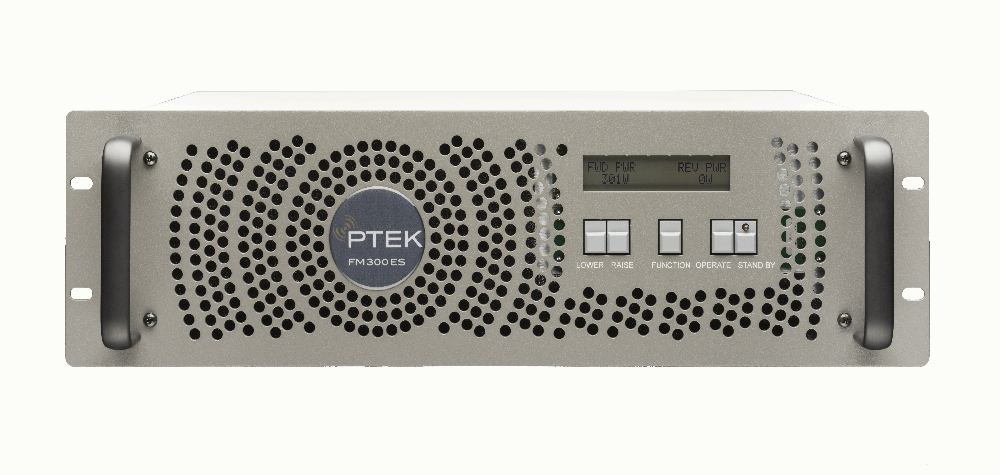Direct Digital Synthesis
is the next evolution of FM
broadcast systems

What is DDS and why should I care?
DDS stands for Direct
Digital Synthesis. DDS is a way of generating
a modulated FM signal without using a voltage
controlled oscillator or VCO. Up until a few
years ago, DDS was impossible and most transmitters
used a VCO. The DDS signal is derived on a
very fast Digital to Analog converter and is
outputted directly to the target frequency.
This is different than the VCO method where an
oscillator is tuned to the desired frequency and
then modulated by a device, usually a varactor
diode.
All VCO/varactor diode based
systems have certain limitations that have plagued
the broadcast industry for
decades. The chief complains are
that the oscillators are microphonic, suffer from
AFC problems and add distortion.
If you bump into one hard
enough, it will make a sound that will be heard on
the air. If the exciter is used in a noisy
environment, rumble and other sounds may be faintly
heard on the radio. This is called being
microphonic. You may have seen some VCOs
potted in silicone or even put into sealed boxes on
rubberized standoffs in some transmitters in an
attempt to mitigate this problem.
Another serious issue occurs
with the Automatic Frequency Control (AFC).
AFC is required to make sure that the transmitter is
operating on the correct frequency. To do
this, there is a feedback circuit, called an AFC
loop, that produces a correction voltage if the VCO
tries to drift off of the assigned channel.
This works well enough, but the AFC can be fooled by
high modulation levels. When high modulation
is applied, especially in low frequencies, this can
simulate an AFC voltage change and cause the exciter
to momentarily drift. This is sometimes known
as AFC tearing because it can manifest itself on the
air as a tearing sound in the demodulated
audio. It also manifests as added
multipath. The folks at Harris made a big
stride towards reducing or eliminating this problem
when they introduced the MS-15 exciter in the late
1970s. The MS-15 used a dual AFC loop
operating at different frequencies. There are
some variations of this technology and they're far
more robust than the simple single speed AFC
loop. Today, almost all commercially available
transmitters using VCOs have multispeed AFCs.
Still, there's an unforeseen drawback. The
dual AFC loop prevents or distorts certain low
frequency audio energy, preventing it from properly
modulating the exciter. This is really
just the old AFC unlock problem, reversed. Instead
of the audio energy unlocking the AFC, the newly
stabilized AFC is so stable that it suppresses some
parts of the modulation. Oops!
There's no real solution to this.
Last, the varactor diode
always introduces distortion to the modulated
carrier. Great VCO design and proper Varactor
selection can minimize this a lot and produce some
very good results, but some distortion always
remains.
The DDS method doesn't use an
AFC or a varactor diode. Instead, the audio is
sampled by an A/D chip and sent digitally to a
dedicated DDS encoder chip. We use the Analog
Devices AD9910, the best DDS encoder available
today. The DDS encoder digitally creates a
modulated FM carrier that is sonically as pure as
the original CD. There's no tearing, multipath
or distortion when the signal is received.
This creates a noticeably cleaner sound than any
standard VCO FM transmitter. It's more
expensive to use DDS, but we think it's well worth
it to maintain higher sonic purity than many of our
competitors and our customer's responses tell us
that they have noticed the difference. In
short, your message matters and at PTEK, we make
sure that your message just sounds better!
|